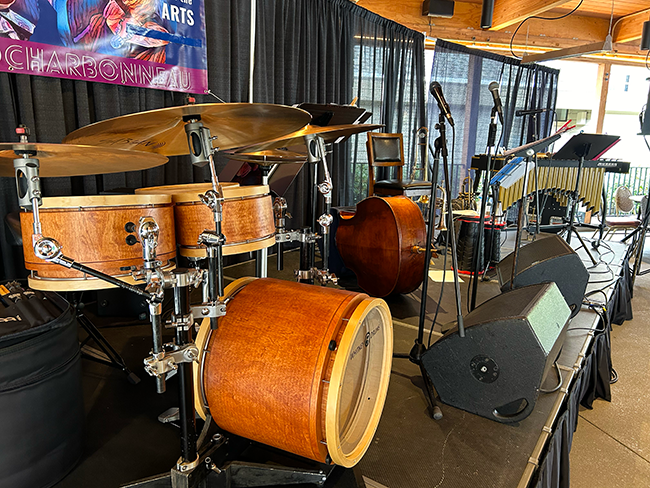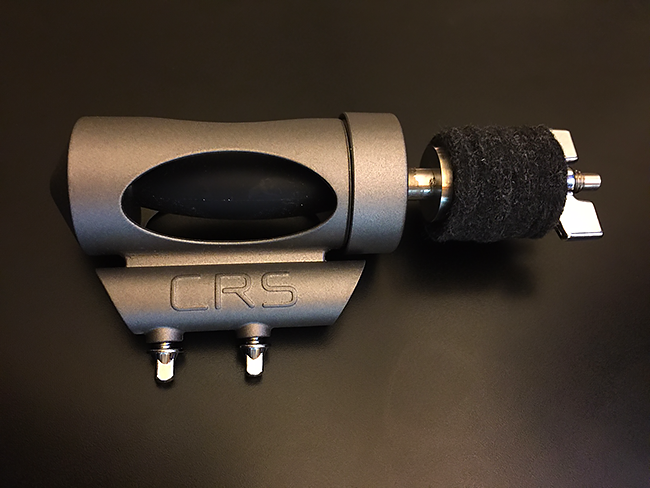Cymbal Resonance System 〈CRS〉 Review
The Cymbal Resonance System is by far one of the best investments I’ve made for improving the overall sound of my Whitney Drum Kits.
Whitney drums allow you to clamp both your tom mounts and your cymbal booms to the same aluminum posts supported by the “quick stand”. While this is a brilliant solution in many ways, you run the risk that some tom tensioning/tunings may be too sympathetic to the cymbal vibrations the drums share a post with and visa versa. With the single-ply, non-coated heads I’m using, combined with the exceptionally versatile and vibrant cymbals I’m using most of the time, playing on a tom could cause a cymbal to start ringing and riding or crashing a cymbal could cause a tom to start humming along.
After several failed attempts to isolate the vibrations going up and down the posts between the toms and cymbals, I decided to give CRS a try.

The CRS completely resolved the sympathetic vibration challenges I was experiencing. The cymbals and toms no longer carry on conversations of their own while I’m playing, and each instrument’s own vibrations aren’t potentially canceling out the vibrations of the others on a shared support post.
What I didn’t expect though was how much sustain CRS adds to my cymbals. Freed from a traditional stationary stem, my cymbals now “float” on their boom arms, and this extends the amount of vibration of each one making for some wonderfully long decay. With the Crescent and Byrne cymbals I’m using, it’s a pretty significant improvement for some of the more intimate settings I play in, and is exceptional in the recording studio.

My two Crescent rides are both high-profile cymbals, meaning that there’s a lot of curvature from the bell to the outer edge (the polar opposite of flat rides), and more possible angles of approach from the stick. For both ergonomic and improved cymbal sound, I position them nearly flat from the player’s perspective. I’m not sure how well they would work for players that prefer a more vertical positioning, but with the slight angle I’m using, the CRS works well. Even with the thick and heavy 22” ride.
Also impressive is that the CRS doesn’t make your cymbals “floppy” after a big crash. I’ve yet to play an outdoor gig with them where there is a lot of wind hitting the stage, but I expect they would do as well as thick felts do at holding cymbals in position for the player.
If you are doing any studio recording, play in intimate settings, or are just interested in hearing your cymbal’s full potential as an instrument, I think you’ll find that CRS is a sound investment; pun intended.